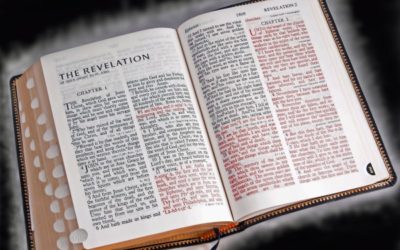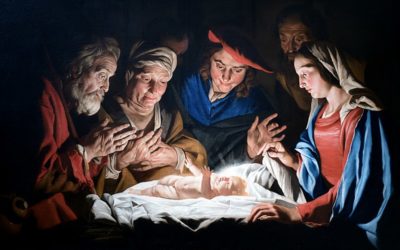March 1832 saw additional revelations to follow the great vision of the hereafter that Joseph Smith and Sidney Rigdon experienced in February (Doctrine and Covenants 76). These March revelations were largely focused on practical concerns of the Church and its members but contain principles that apply to us today.
Doctrine and Covenants 77
Sometime probably between March 4 and 20, 1832, while Joseph and a scribe were translating the book of Revelation in the New Testament, Joseph dictated responses to questions about the symbolism in that book.
For more on the history of this section, click here.
Joseph’s answers explain events past, present, and future into the eternities. For example, verse 5 says that twenty-four elders of the New Testament church “had been faithful in the work of the ministry and were dead” and “then in the paradise of God.” Verse 12 explains that in the last part of the earth’s temporal existence, the Lord will “sanctify the earth, and complete the salvation of man, and judge all things, and shall redeem all things, except that which he hath not put into his power,” meaning the sons of perdition. Verse 1 points out that “the earth, in its sanctified, immortal, and eternal state” will be a “sea of glass,” a topic to which he would return later (Doctrine and Covenants 130:6‒9).
Doctrine and Covenants 78
The establishment of Zion in Missouri required funds, particularly for the purchase of lands for migrating Saints and for publishing the scriptures on the press established there. Section 78 of the Doctrine and Covenants, given March 1, 1832, was received originally to help fulfill those purposes, though its principles were later extended to the care of the poor and needy generally.
For more on the history of this section, click here.
Providing for the Saints’ needs and publishing scripture help “to advance the cause” of the Church “to the salvation of man, and to the glory of your Father who is in heaven” (verse 4). The Church needs to have well-organized resources so that “notwithstanding the tribulation which shall descend upon you, . . . the church may stand independent above all other creatures beneath the celestial world” (verse 14).
Section 76 earlier explained that “the church of the Firstborn” was those who will inherit the celestial kingdom. The declaration in section 78 that “ye are the church of the Firstborn, and he will take you up in a cloud” (verse 21) must have been thrilling to the Saints.
Doctrine and Covenants 79
In the early days of the Church, members could visit the Prophet and request a commandment or revelation to guide them in their lives. Today, we receive patriarchal blessings and other priesthood blessings to aid us. On March 12, 1832, missionary Jared Carter visited Joseph Smith, who was then living in Hiram, Ohio, with the John and Elsa Johnson family. Section 79 is a revelation Joseph received for Jared on that occasion.
For more on the history of this section, click here.
For information on Jared Carter, click here.
Importantly, this revelation taught Jared a principle important to all of us, which is that on personal matters, we do not need to go to the Prophet to get a revelation. Speaking of Jared, the Lord tells Joseph, “And I will send upon him the Comforter, which shall teach him the truth and the way whither he shall go; and inasmuch as he is faithful, I will crown him again with sheaves” (verses 2–3). In other words, those who have received the gift of the Holy Ghost can receive answers to personal questions to guide them in their lives.
Doctrine and Covenants 80
On March 7, 1832, at Hiram, Ohio, Joseph received a revelation for young missionary Stephen Burnett, giving him instructions about his mission. Some of the counsel is quite specific, such as who his missionary companion should be (verse 2). Other parts of the section apply generally to missionaries today, including member missionaries:
• “Go ye, go ye into the world and preach the gospel to every creature that cometh under the sound of your voice” (verse 1).
• “Declare the things which ye have heard, and verily believe, and know to be true” (verse 4).
For more on the history of this section, click here.
Photo credit for image at top of page: Stock photo from depositphotos.com.



